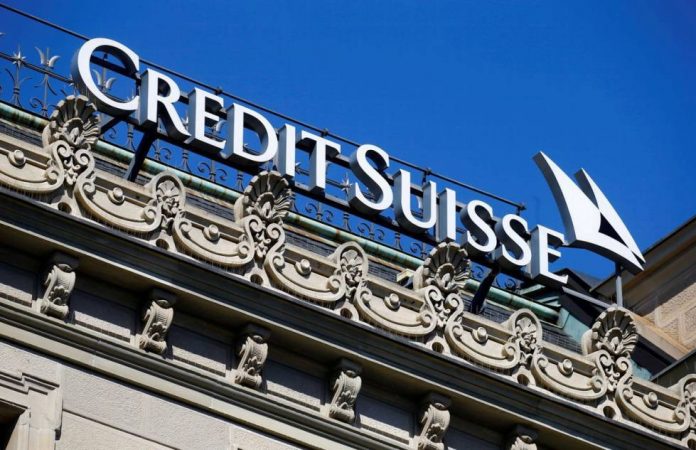By Ricardo Vaz
Mérida, (venezuelanalysis.com) – Credit Suisse is expecting the Venezuelan economy to grow by 5.5 percent in 2021.
In an October report for investors, the Swiss financial institution revised its previous 4 percent growth prediction for the Caribbean nation’s gross domestic product (GDP). Analyst and report author Alberto Rojas justified the prospects on a “positive income effect from high oil prices and the widespread use of foreign currencies in everyday activities.”
Venezuelan GDP has contracted by more than two-thirds in a recession dating back to 2014. The crisis was triggered by an oil price crash before being heavily compounded by US sanctions.
Speaking to Venezuelanalysis, economist and former minister Luis Salas argued that the Credit Suisse forecast seemed like “an overestimation,” though he added that GDP estimations are complex given that the Venezuelan Central Bank (BCV) has not released data since the first trimester of 2019.
“I would say it’s more of a post-pandemic ‘reactivation,’ for example in retail sectors, rather than an economic recovery,” Salas said. He added that growth between 0 and 1 percent would be more likely, explaining that the heavily contracted economy still had a lot of “inertia” from the pandemic lockdown during the first half of the year.
“Whether this recovery or reactivation is sustainable remains to be seen,” he continued. “An economic growth of the magnitude predicted by Credit Suisse would likewise mean, for example, an electricity demand that our grid cannot meet right now.”
The Swiss bank’s GDP growth prediction is not unanimous, with the International Monetary Fund (IMF) expecting a 5 percent contraction.
The Swiss bank’s revised estimation coincided with the country registering its lowest inflation levels in more than six years. According to the BCV, September’s 7.1 percent mark is the first one in single digits since April 2017 and the lowest since 6.4 percent in April 2015. Accumulated inflation stands at 531 percent in 2021 and 1,949 percent over the past 12 months.
The slowdown of the country’s inflationary spiral is largely attributed to a more stable exchange rate between the bolívar and the US dollar. A speculative spike following the monetary reconversion that rolled out the “digital bolívar” (BsD) on October 1 was quickly reverted, with analysts pointing to regular cash injections from the BCV as the source of the forex stability.
In contrast, Salas contends that the Central Bank’s most important intervention might not be assigning foreign reserves for so-called “exchange tables” but instead heavily restricting monetary liquidity, which leads to a reduced purchasing power.
“At the time of the reconversion, the amount of bolívars in circulation was around $550 million. This means that there is also less money to purchase dollars,” he explained. The Venezuelan economist recalled that the end-of-year months usually have higher inflation but that he expected authorities to prioritize keeping the exchange rate under control.
The positive indicators and forecasts have come despite Venezuela’s oil sector remaining stagnant. The latest OPEC monthly report placed the country’s output at 527,000 barrels per day (bpd) in September, down from 533,000 bpd in August, according to secondary sources.
State oil company PDVSA reported a slightly higher number of 650,000 bpd, up 9,000 bpd from the preceding month.
Venezuelan oil production has fallen precipitously from an average of 1.9 million bpd in 2017 all the way to 500,000 in 2021 as the industry struggled with strained infrastructure, a brain drain and crushing US unilateral coercive measures.
Following financial sanctions against PDVSA in August 2017, Washington has levied an oil embargo, secondary sanctions and a raft of other measures to strangle Caracas’ most important export.
PDVSA’s output rebounded in early 2021 after hitting historic lows in the second half of 2020 but the recovery was hampered by a pipeline explosion in March and diluent shortages in recent months. According to Reuters, exports from the joint ventures in the eastern Venezuela Orinoco Oil Belt fell by 34 percent in September compared to August.
With sanctions blocking diluent imports and nixing existing swap agreements, the South American country struck a deal with Iran to exchange oil for condensate, a material used to blend Venezuela’s extra-heavy crude into exportable grades. A steady diluent supply could boost production again, with a first 2.1-million barrel shipment reportedly arriving in late September.
In response, US officials have expressed “concern” over the trade agreement, with a Treasury Department spokesperson telling Reuters that Washington “will continue to enforce both Iran and Venezuela-related sanctions.”





